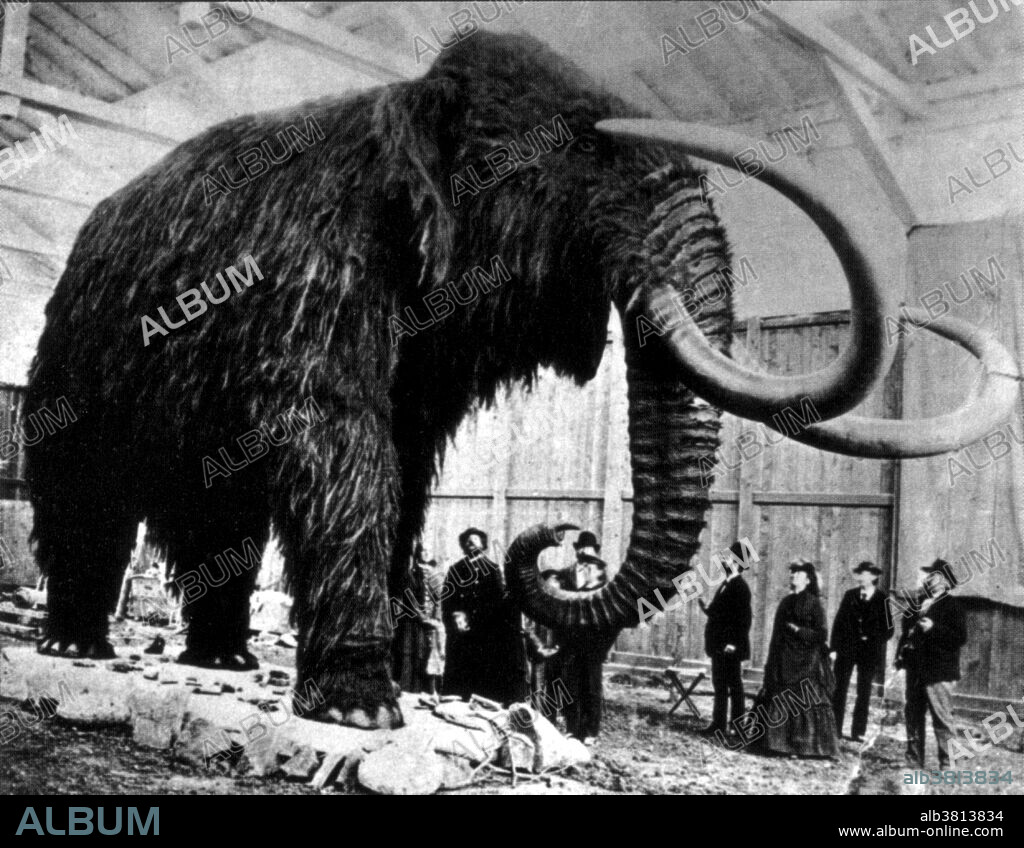alb3813834
Woolly Mammoth Found In Siberia, 1903

|
Añadir a otro lightbox |
|
Añadir a otro lightbox |



¿Ya tienes cuenta? Iniciar sesión
¿No tienes cuenta? Regístrate
Compra esta imagen

Título:
Woolly Mammoth Found In Siberia, 1903
Descripción:
Traducción automática: El mamut lanudo (Mammuthus primigenius) es una especie de mamut. Este animal es conocido por huesos y cadáveres congelados del norte de América del Norte y del norte de Eurasia con los cadáveres mejor conservados de Siberia. A diferencia de la mayoría de los otros animales prehistóricos, sus restos a menudo no están literalmente fosilizados, ni convertidos en piedra, sino que se conservan en su estado orgánico. Esto se debe en parte al clima helado de sus hábitats y a su enorme tamaño. Por lo tanto, los mamuts lanudos se encuentran entre los vertebrados prehistóricos mejor comprendidos por la ciencia en términos de anatomía. Este animal apareció durante la era Cenozoica, la era más reciente del tiempo geológico, desde hace unos 65 millones de años hasta la actualidad. El clima era cálido y tropical hacia el comienzo de la era y se enfrió significativamente en la segunda mitad, lo que provocó varias edades de hielo. Los humanos aparecieron por primera vez cerca del final de esta era. Título original: Mamut lanudo encontrado en Siberia, 1903. Los productos importados de Siberia a China incluían colmillos de mamuts, cuyos cuerpos se encontraron perfectamente conservados en suelo congelado. Los chinos molían el marfil prehistórico para hacer un polvo medicinal, que se consideraba una cura milagrosa para diversas enfermedades.
The Woolly Mammoth (Mammuthus primigenius) is a species of mammoth. This animal is known from bones and frozen carcasses from northern North America and northern Eurasia with the best preserved carcasses in Siberia. Unlike most other prehistoric animals, their remains are often not literally fossilized, turned into stone, but rather are preserved in their organic state. This is due in part to the frozen climate of their habitats, and to their massive size. Woolly mammoths are therefore among the best-understood prehistoric vertebrates known to science in terms of anatomy. This animal appeared during Cenozoic era, the most recent era of geologic time, from about 65 million years ago to the present. The climate was warm and tropical toward the beginning of the era and cooled significantly in the second half, leading to several ice ages. Humans first appeared near the end of this era. Originally captioned: Woolly Mammoth found in Siberia, 1903. The goods imported from Siberia to China included the tusked of mammoths, whose bodies were found perfectly preserved in frozen soil. The Chinese ground the prehistoric ivory to make a medicinal powder, which was considered to be a miraculous cure for various diseases.
Crédito:
Album / Science Source / New York Public Library
Autorizaciones:
Modelo: No - Propiedad: No
¿Preguntas relacionadas con los derechos?
¿Preguntas relacionadas con los derechos?
Tamaño imagen:
4500 x 3494 px | 45.0 MB
Tamaño impresión:
38.1 x 29.6 cm | 15.0 x 11.6 in (300 dpi)
Palabras clave:
1903 • ANIMAL • ANIMALIA • BLANCO Y NEGRO • CENOZOICO • CHORDATA • EXTINCIÓN • EXTINGUIDO • FAUNA • FOTO • FOTOGRAFIA • HERBIVORO • MAMIFERO • MAMÍFEROS • MAMMUTHUS PRIMIGENIUS • MAMMUTHUS • MAMUT LANUDO • MAMUT • NAVEGADOR • PALEOBIOLOGIA • PALEONTOLOGIA • PERIODO • PREHISTORIA • PREHISTORICO • SIGLO XX • VERTEBRADO
 Pinterest
Pinterest Twitter
Twitter Facebook
Facebook Copiar enlace
Copiar enlace Email
Email
